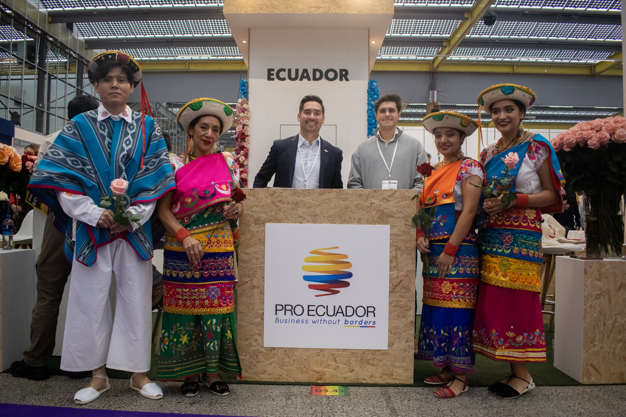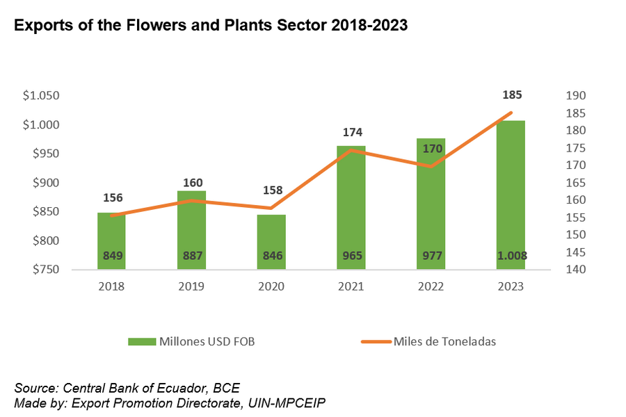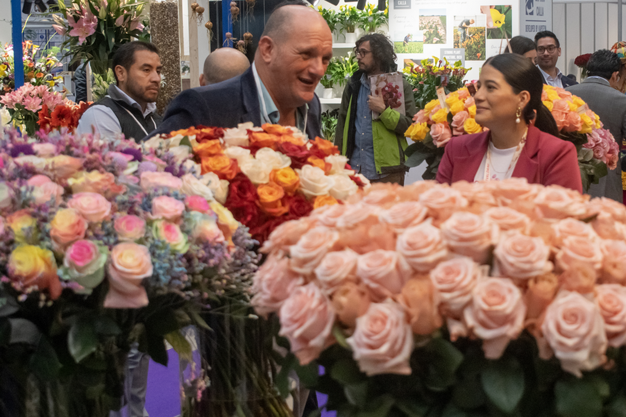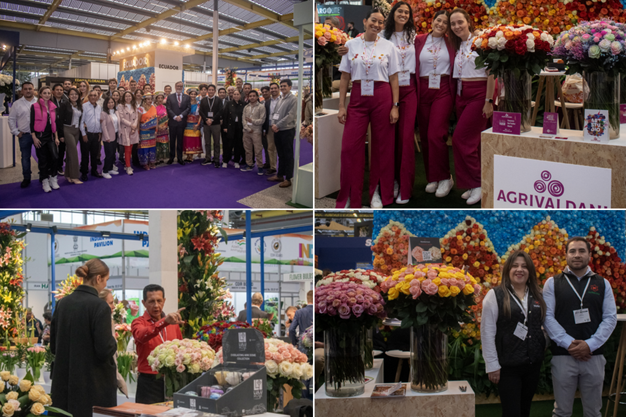Being one of Latin America's largest flower exporters, Ecuador's floriculture sector plays a significant role in the international flower market. Located in the northwest of Latin America, the country's geography, varied climates, and fertile soil offer favorable conditions for flower growth. Especially so in the Sierra, the Ecuadorian Andean highlands. As the international realm is a dynamic one, international exports are subject to various international politico-economic developments and their accompanying challenges. To enhance the sector's strength and resilience in this ever-evolving field, the Vice Ministry of Export Promotion (Pro Ecuador) provides support to floriculture stakeholders towards enhancing the sector's strength and resilience. This article will elaborate on the industry's development and its current challenges, as well as the ways in which Pro Ecuador supports the Ecuadorian floriculture sector.

Pro Ecuador at the IFTF 2023 in Vijfhuizen, the Netherlands
The Ecuadorian floriculture sector in a nutshell
According to Pro Ecuador, Ecuadorian flower cultivation began in the 1970s with the cultivation of tropical flowers, summer flowers, and roses. The 1980s saw a growth in production, the start of floriculture exports, and the establishment of the Association of Flower Producers and Exporters (Expo Flores) in 1984. The 1990s were characterized by infrastructural, logistical, and technological developments. Around 2000, the number of plantations had grown from 30 to 350. Today, the floriculture sector is among Ecuador's largest: According to data provided by Pro Ecuador, it's the country's 6th largest sector as it generates 600 flower companies and 300.000 jobs in the Sierra region. According to figures from the Central Bank of Ecuador (BCE), export volumes increased from 849 million US dollars in 2018 to 1,008 million US dollars in 2023. "In the past 6 years, the sector's volume grew by 4,5%. This growth trend continues in such a way that its growth is exponential, and exports exceed those of 2022. Undoubtedly, it is one of the most important sectors in the trade balance," says Juan Carlos Yépez France, Counseller-Head of Commercial at Pro Ecuador.

A graph on Ecuador's export volumes shared by Pro Ecuador
Challenges for international exports
Juan Carlos Yépez highlights that Ecuador's horticulture exports are currently faced with international political and economic challenges. He says, "the last two years, exports to Ecuador's main markets, the United States, the European Union, and Russia, are challenged by several international developments. High inflation rates in the United States and Europe have, for instance, led to a decrease in flower consumption in those markets. In addition, the export levels to Russia are falling behind due to the Russia-Ukraine war. Moreover, maritime transport has become more expensive, and a lack of container service puts pressure on the supply of cargo flights and airfares, although the supply has been stabilizing since the end of 2022. Further, the sector is facing higher production and labor costs and the uncertainty that comes with those changes and trends in the world market."
He adds: "The diversification of Ecuador's export markets prevented exports from being completely affected by the aforementioned challenges. Although there were decreases in exports to traditional flower markets, producers and exporters shifted their attention to other countries, including Kazakhstan, the Netherlands, Italy, Canada, Spain, Chile, Germany, and Qatar. The lack of transport service was minimized by the floriculture association Expoflores' efforts to maintain cargo demand."

Ecuadorian flowers on display at the IFTF 2023 in Vijfhuizen, the Netherlands
Pro Ecuador's role
Pro Ecuador seeks to support the Ecuadorian floriculture sector by "promoting exports and foreign investment, providing training, advice, and technical assistance services to exporters and unions or associations." As part of this mission, it participates in international trade promotion events through the Directorate of Export Promotion and Commercial Offices Abroad. Examples of such events are trade missions, network events such as Business Matchmaking Ecuador 2023, and international trade fairs. For instance, in October 2023, 12 Ecuadorian flower growers participated at the International Floriculture Trade Fair (IFTF) in Amsterdam following a collaboration between Pro Ecuador and the Import Promotion Desk (IPD), an initiative for import promotion in Germany. In addition, Pro Ecuador articulates inter-institutional activities with entities such as the Ministry of Agriculture and Livestock (MAG) and the Agency for Regulation and Control of Plant and Animal Health (Agrocalidad).

Ecuadorian flower growers at the IFTF 2023 in Vijfhuizen, the Netherlands
For more information:
Juan Carlos Yépez Franco
ProEcuador
Email: [email protected]
www.proecuador.gob.ec
